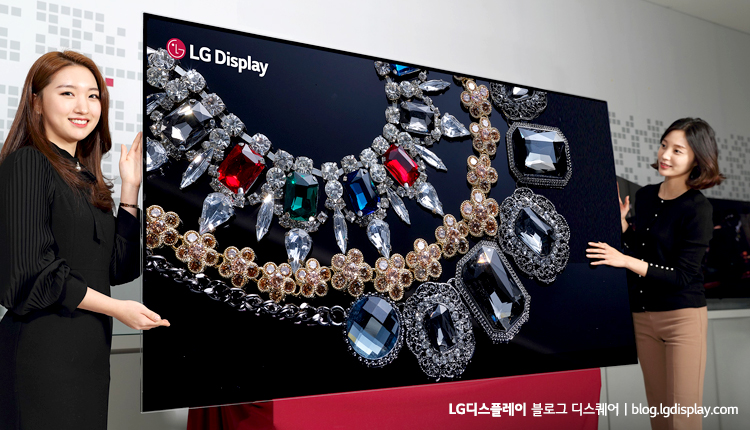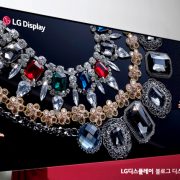8K OLED TV, Can we see it in the second half of the year?

Competition in the premium TV market is expected to be cutthroat.
The market share of OLED TV is on the rise in the premium TV market due to Sony’s entry into the OLED TV market and LG Electronics’ aggressive price cuts. However, LCD camp is responding with 8K high-resolution strategy, and attention is focused on whether it can prevent the rise of OLED in the premium TV market.
Sharp has already started selling 8K LCD TVs for the first time in the world since last year. Samsung Electronics showcased 8K TV at CES earlier this year, and will launch 8 K QLED (QD-LCD) products in the second half of the year. In the OLED camp, LG Display exhibited 88inch 8K OLED TV at CES, but the launch of 8K OLED TV in the second half is still unknown.
OLED TVs, which are currently in mass production, are based on bottom emission type. Thus, the light is emitted from the remaining portion of the pixel except the TFT region since the light is emitted through the TFT. Therefore, in the same size TV, as the resolution increases, the pixel size becomes smaller, but the area where the size of the TFT is reduced is limited, so that the area where the light is emitted becomes narrower. Consequently, in order to realize a high resolution at the same size, it is necessary to broaden the aperture ratio as much as possible or improve the performance of the emitting materials.
As a way of increasing the aperture ratio, there is a method of applying a top emission structure. Since the top emission structure emits light in the encapsulation direction, not the TFT direction, it can secure a wider aperture ratio than the bottom emission. However, there are pending problems that the encapsulation using opaque metal sheet should be changed to a transparent material and the color filter should be formed above the encapsulation with the change of the process.
The development of TADF blue and new blue materials is actively underway in the emitting material side.
The 88inch 8K OLED TV released by LG Display is made with a bottom emission structure and its ppi is about 100, which is about 20% higher than 80 ppi of the 55inch 4K currently being sold. When the pixel size is compared with the whole display size, the 55 inch 4K pixel is calculated to be about 40% wider than the 88inch 8k pixel.
In order to achieve the same level of brightness and lifetime as 55inch 4K, it is necessary to optimize the TFT design and improve the performance of the emitting materials to make up for the 40% decrease in pixel size. The industry is paying attention to whether the 8K OLED TV will be launched, with resolving above-mentioned issues, against the 8K LCD TV, which is expected to be released in the second half of the year.




Leave a Reply
Want to join the discussion?Feel free to contribute!